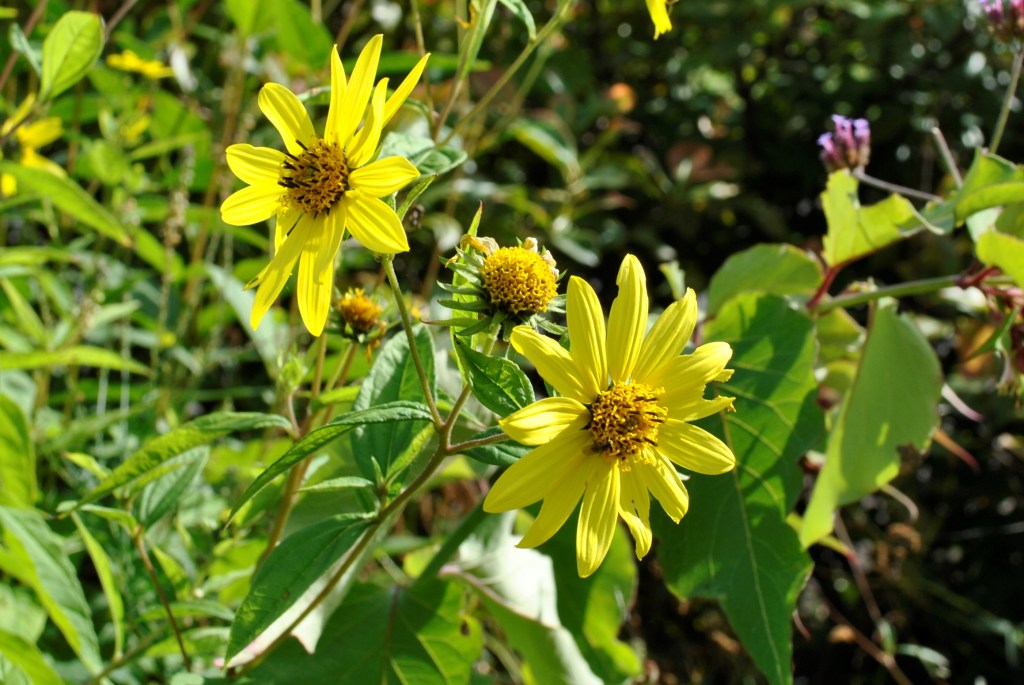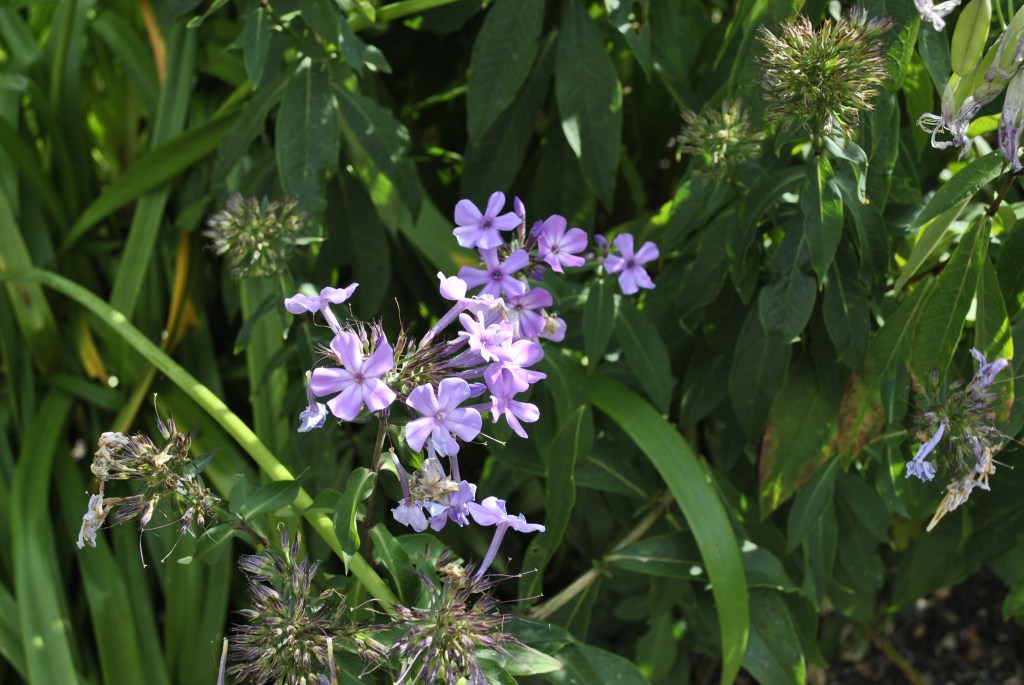
It rained all day on Friday and is still raining this morning here in the Cotswolds so these pictures were taken earlier in the week when the weather was still mild and sunny. As I look out of the window today, all I see is the devastating effects of wind and rain on anything above a foot tall. My Sweet Pea obelisk is lying horizontal on the ground and the tall, swaying Leucanthemums are now flat on their pretty white faces. And to top it off, we are forecast 40mph winds today!

My Dahlias are all either short varieties or young plants this year, and anyway they love the rain, the more the merrier for them. This one isn’t a named cultivar yet, it is a hybrid from days gone by but I keep the tuber going in the vain hope that it might be the next ‘Big Thing’. I have called it ‘Radiant Heat’ which I thought was quite apt. Hoping that Thompson & Morgan might be reading this and will make me an offer I can’t refuse!

The Agapanthus are flowering a month later this year, probably due to the difficult winter they had. I have met a lot of people who have lost them completely, fleshy roots turned to mush by the harsh conditions in December. I always overwinter my evergreen ones in their pots in the greenhouse and keep them bone dry from October onwards until I start them off again in March. The herbaceous ones, also now in big terracotta pots, are turned on their sides and put in a sheltered spot behind the shed to keep the worst of the rain out.

Once again this year, the Diascia personata has been the subject of much discussion on walks around the garden with visitors and friends. I think 99/100 people think of Diascia as miniature plants in a variety of different colours, a bit like Nemesia. But this species of Diascia grows to waist height and is always lipstick pink. I find it doesn’t overwinter well in the ground so I take cuttings in June and July which grow into stocky little plants by September and survive in the cold greenhouse until spring. They are so floriferous, they almost flower themselves to death. By the end of the year, having flowered for nearly 10 months, they are exhausted!

This is one of several summer flowering ornamental onions I now have in the garden. I like them because they are short and flower reliably every year, unlike Spring flowering versions which I find are quite variable and often don’t appear the following year. The one pictured is Allium angulosum, or Mouse Garlic as it is often called. I now also have Allium ‘Millennium’ and Allium cernuum as well as Allium ampeloprasum, better known as Elephant Garlic. The flowers are beautiful purple lavender globes and highly attractive to bees and other pollinators.

As I have mentioned many times over the years, I am not a big fan of Garden Phlox but they are such reliable plants, given enough moisture, that I am reluctant to get rid of them. I keep splitting them and they seem to do even better! I believe this one is called ‘Blue Paradise’ but I couldn’t swear to it. The previous owner planted a few different ones in the 60’s and they are still growing strong which is a testament to their longevity. They can suffer from mildew if they get too dry at the roots which is why they probably went out of favour.

No roses worth showing this week so I decided to feature the delightfully named Clematis ‘Yukikomachi’ which is a short viticella variety ideal for a trellis panel next to a gate which is where mine is and gives me pleasure every time I pass through. I just hope it is still there tomorrow!
Have a great weekend
David






